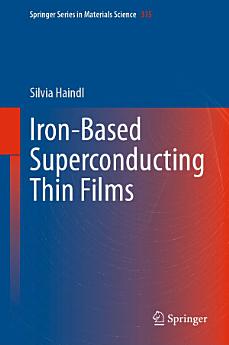Iron-Based Superconducting Thin Films
Silvia Haindl
জুন ২০২১ · Springer Series in Materials Science কিতাপ 315 · Springer Nature
ইবুক
392
পৃষ্ঠা
reportমূল্যাংকন আৰু পৰ্যালোচনা সত্যাপন কৰা হোৱা নাই অধিক জানক
এই ইবুকখনৰ বিষয়ে
This book provides a modern introduction to the growth, characterization, and physics of iron-based superconducting thin films. Iron pnictide and iron chalcogenide compounds have become intensively studied key materials in condensed matter physics due to their potential for high temperature superconductivity. With maximum critical temperatures of around 60 K, the new superconductors rank first after the celebrated cuprates, and the latest announcements on ultrathin films promise even more. Thin film synthesis of these superconductors began in 2008 immediately after their discovery, and this growing research area has seen remarkable progress up to the present day, especially with regard to the iron chalcogenides FeSe and FeSe1-xTex, the iron pnictide BaFe2-xCoxAs2 and iron-oxyarsenides.
This essential volume provides comprehensive, state-of-the-art coverage of iron-based superconducting thin films in topical chapters with detailed information on thin film synthesis and growth, analytical film characterization, interfaces, and various aspects on physics and materials properties. Current efforts towards technological applications and functional films are outlined and discussed. The development and latest results for monolayer FeSe films are also presented. This book serves as a key reference for students, lecturers, industry engineers, and academic researchers who would like to gain an overview of this complex and growing research area.
এই ইবুকখনক মূল্যাংকন কৰক
আমাক আপোনাৰ মতামত জনাওক।
পঢ়াৰ নির্দেশাৱলী
স্মাৰ্টফ’ন আৰু টেবলেট
Android আৰু iPad/iPhoneৰ বাবে Google Play Books এপটো ইনষ্টল কৰক। ই স্বয়ংক্রিয়ভাৱে আপোনাৰ একাউণ্টৰ সৈতে ছিংক হয় আৰু আপুনি য'তে নাথাকক ত'তেই কোনো অডিঅ'বুক অনলাইন বা অফলাইনত শুনিবলৈ সুবিধা দিয়ে।
লেপটপ আৰু কম্পিউটাৰ
আপুনি কম্পিউটাৰৰ ৱেব ব্রাউজাৰ ব্যৱহাৰ কৰি Google Playত কিনা অডিঅ'বুকসমূহ শুনিব পাৰে।
ই-ৰীডাৰ আৰু অন্য ডিভাইচ
Kobo eReadersৰ দৰে ই-চিয়াঁহীৰ ডিভাইচসমূহত পঢ়িবলৈ, আপুনি এটা ফাইল ডাউনল’ড কৰি সেইটো আপোনাৰ ডিভাইচলৈ স্থানান্তৰণ কৰিব লাগিব। সমৰ্থিত ই-ৰিডাৰলৈ ফাইলটো কেনেকৈ স্থানান্তৰ কৰিব জানিবলৈ সহায় কেন্দ্ৰত থকা সবিশেষ নিৰ্দেশাৱলী চাওক।







